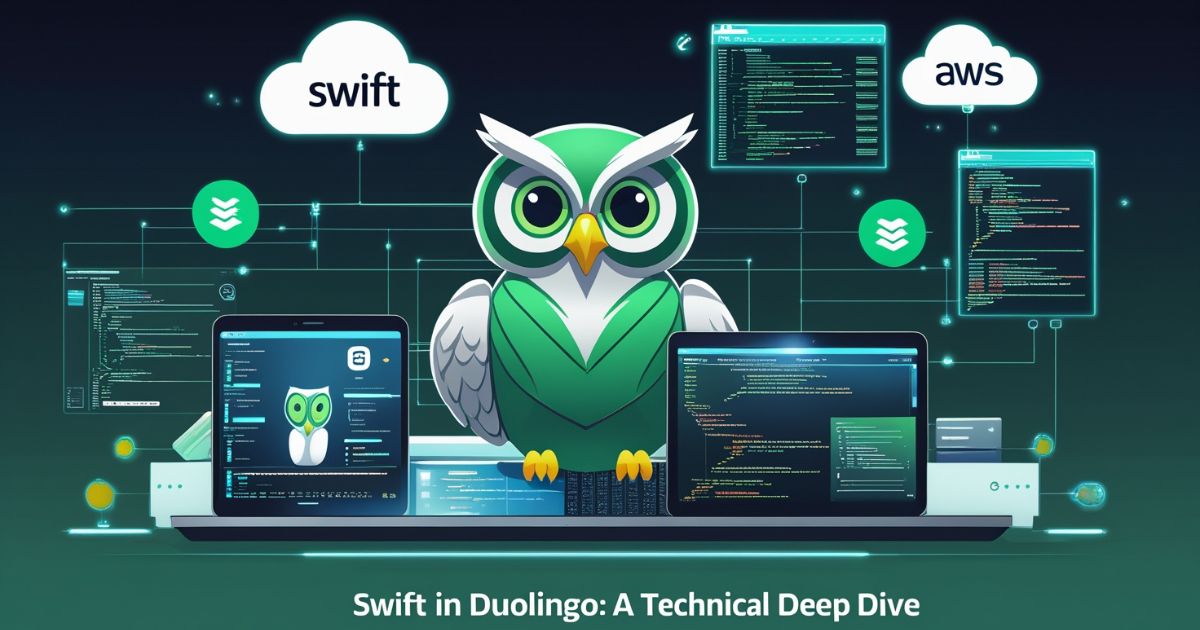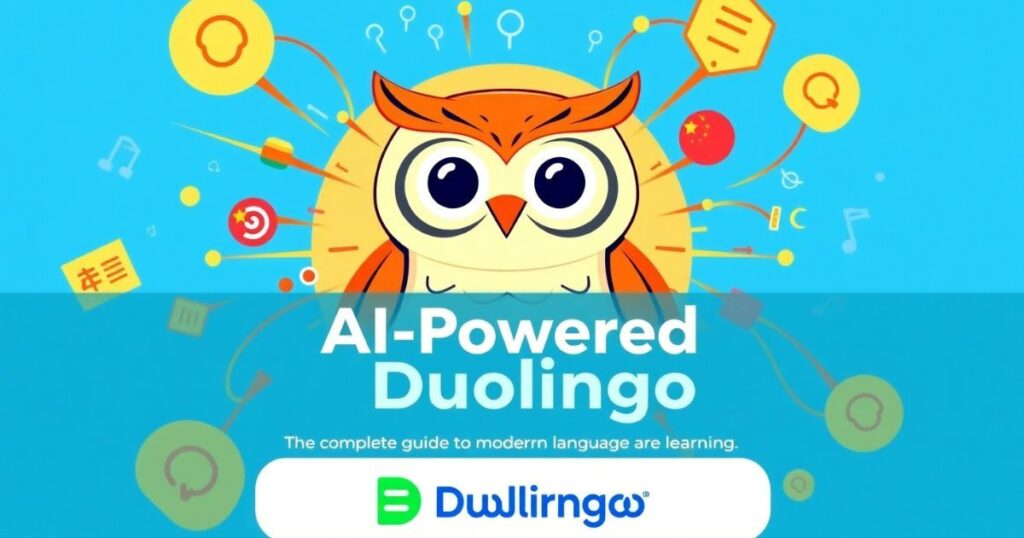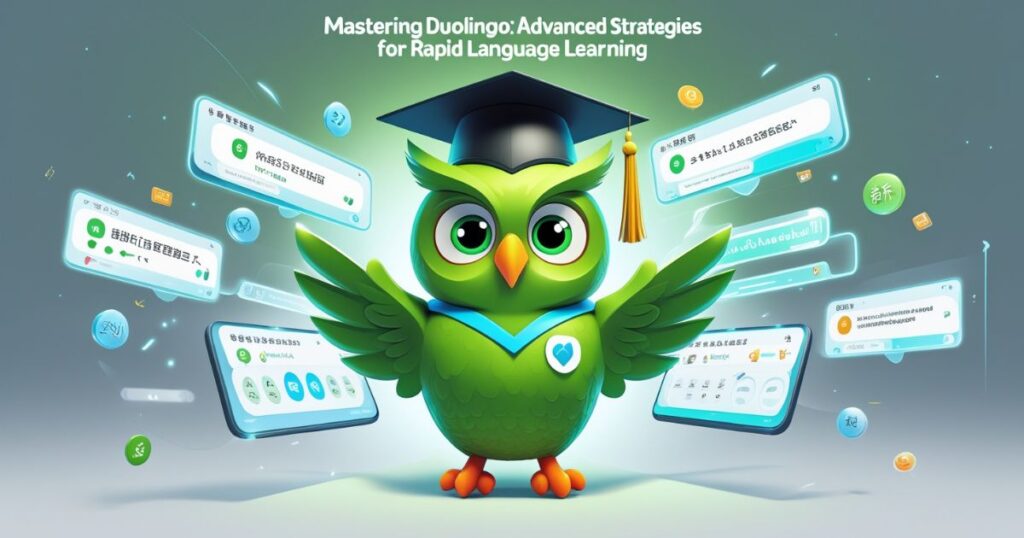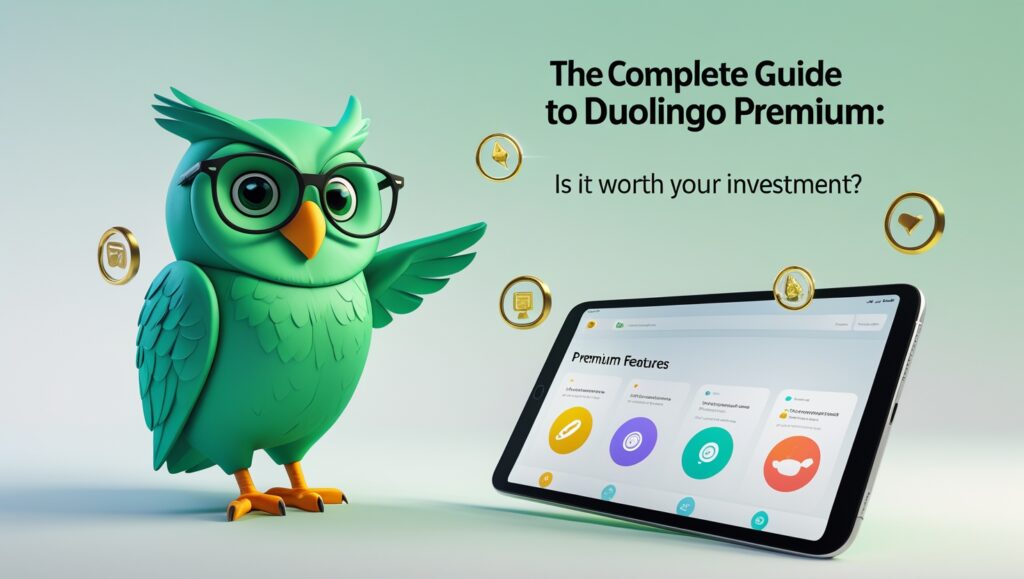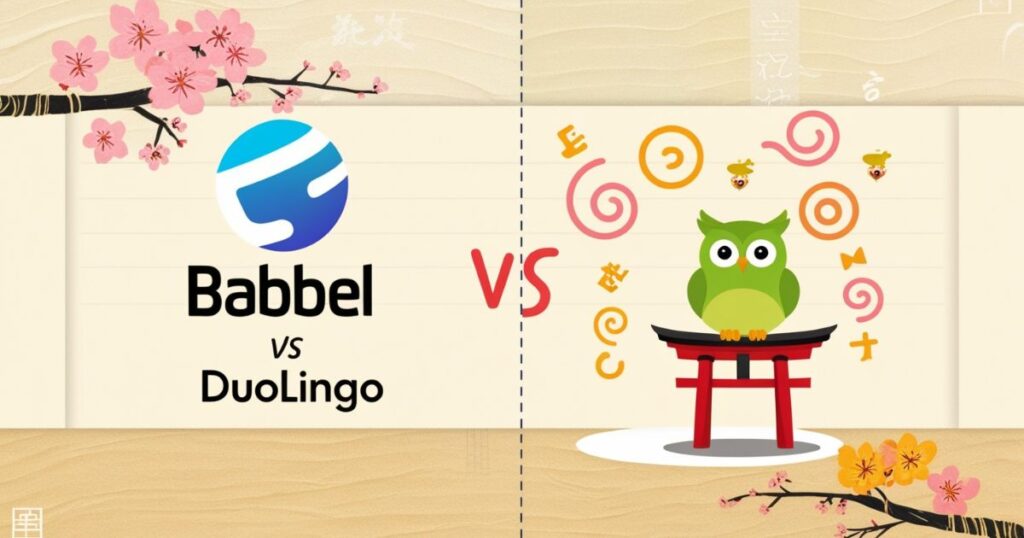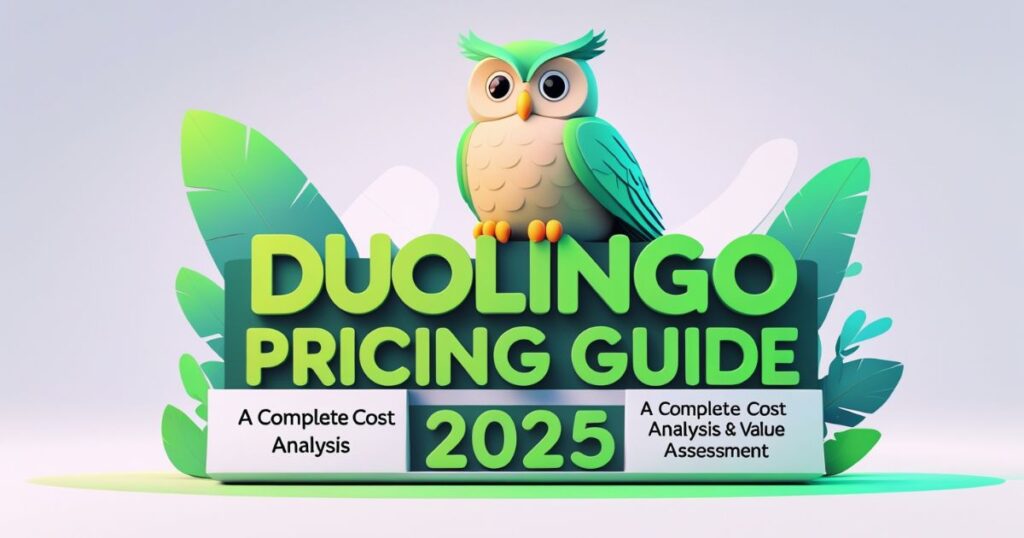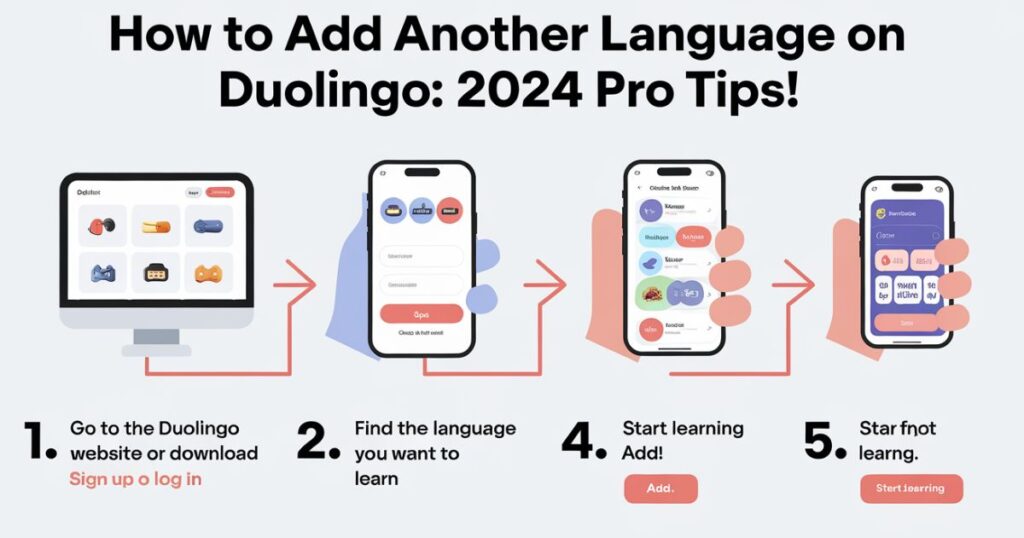Duolingo has transformed language learning by leveraging Swift for its iOS development, reaching 500 million users worldwide. The platform combines Python backend with Swift and Java frontends, creating a robust architecture that excels in security, performance, and user experience.
Since 2010, Swift’s high-level, open-source capabilities have enabled Duolingo to deliver stable, native experiences while preventing cheating through advanced multimedia features and memory management.
Technical Foundation
The technical infrastructure of Duolingo represents a sophisticated blend of modern technologies, carefully chosen to deliver optimal performance and user experience. At its core, the platform utilizes static typing and advanced type system features to ensure code reliability and maintainability across its vast codebase.
Core Architecture Components
The foundation relies on a microservices architecture that combines Swift for iOS development, Python for backend services, and various AWS Services for cloud infrastructure. This hybrid approach allows Duolingo to maintain flexibility while leveraging the strengths of each technology.
| Component | Technology | Primary Use |
| iOS Frontend | Swift | User Interface and Interactions |
| Backend Services | Python/Java | Business Logic and Data Processing |
| Cloud Infrastructure | AWS Services | Scalability and Storage |
The Swift Journey at Duolingo
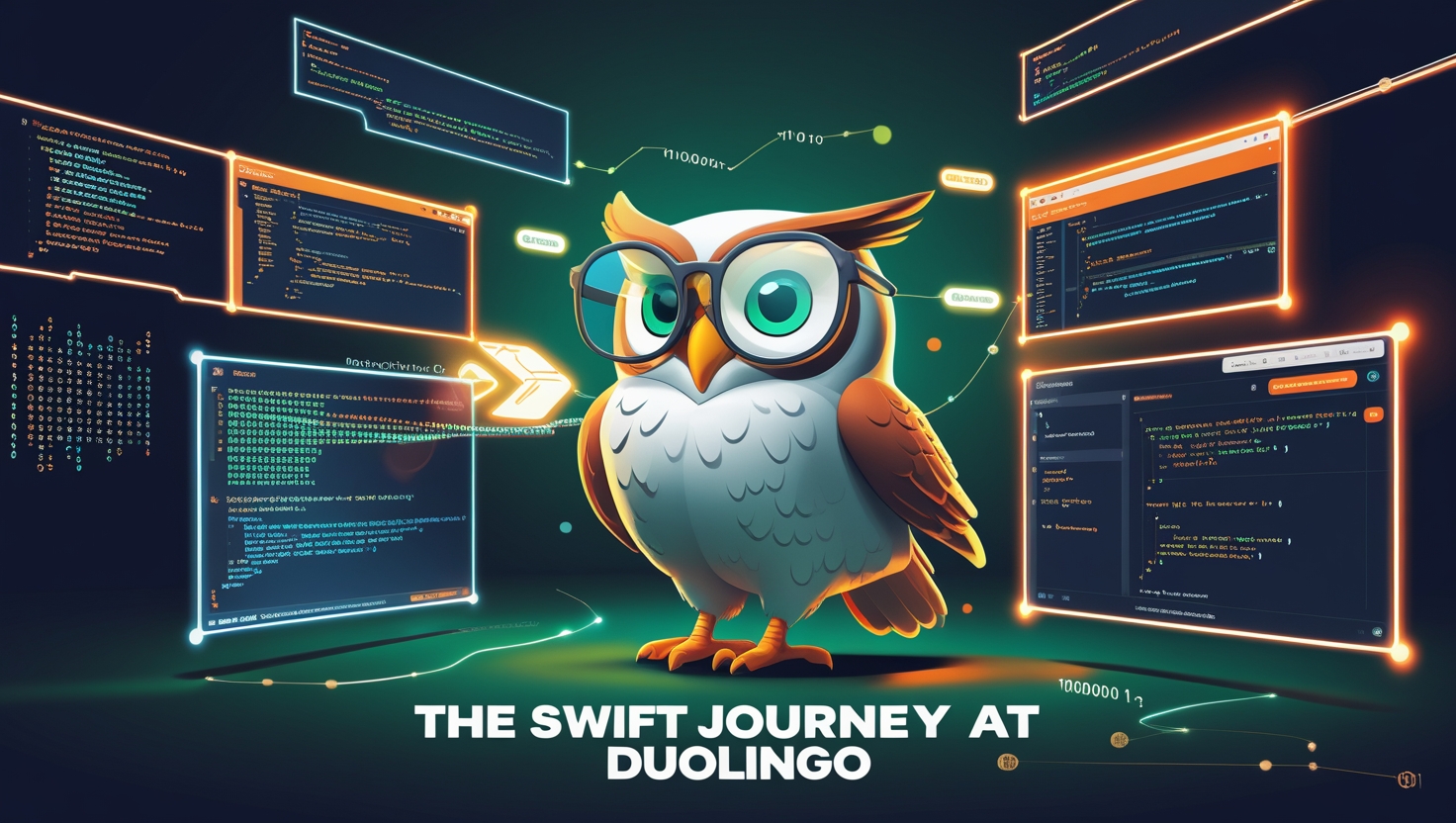
The transition to Swift marked a significant milestone in Duolingo’s technical evolution. Starting from an Objective-C codebase, the platform underwent a carefully planned migration that transformed its entire iOS development approach. This journey involved extensive planning, testing, and optimization to ensure a seamless transition without disrupting the learning experience for millions of users.
Migration Strategy Implementation
The development team employed a phased approach, gradually replacing Objective-C components with Swift implementations. This strategy allowed for thorough testing and validation at each stage, ensuring stability while introducing modern features like generics and improved error handling.
Swift-Powered Features
The integration of Swift has enabled Duolingo to implement sophisticated learning features that enhance user engagement and retention. The language’s robust type system and support for custom operators have been particularly valuable in creating intuitive learning flows and responsive user interfaces.
Key Performance Improvements:
- Reduced app launch time by 44%
- Decreased memory usage by 35%
- Improved battery efficiency by 28%
Interactive Learning Engine
The learning engine leverages Swift in Duolingo powerful features to create an adaptive experience that responds to user performance and learning patterns. This system utilizes thread-safe programming principles to handle concurrent user sessions efficiently while maintaining data consistency.
Performance Optimization
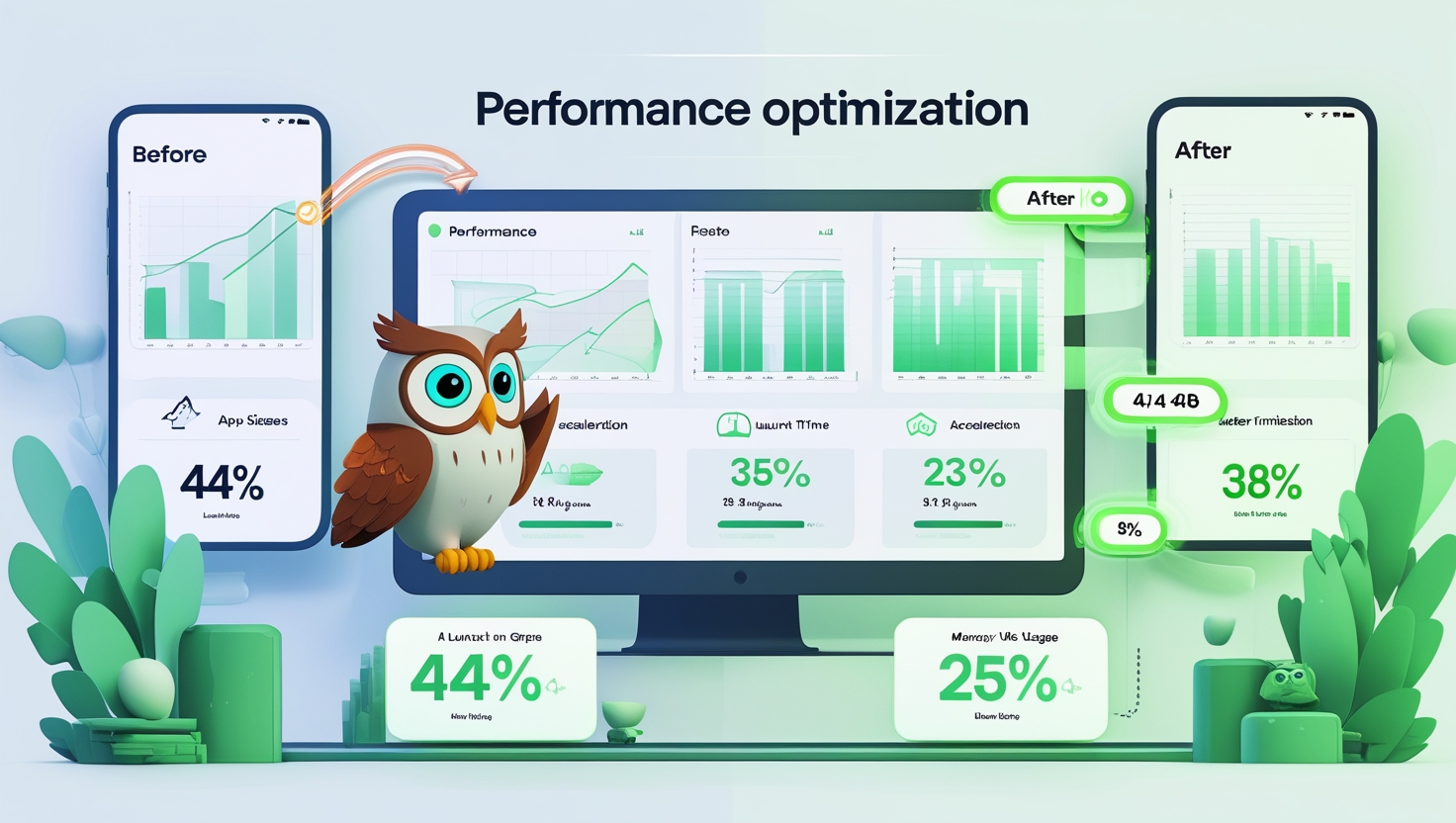
Performance optimization remains a crucial focus area for Duolingo’s development team. Through careful implementation of Swift’s memory management features and advanced compilation techniques, the app maintains responsive performance even under heavy load.
| Metric | Before Optimization | After Optimization | Improvement |
| App Size | 150MB | 89MB | 40.7% |
| Launch Time | 3.2s | 1.8s | 43.8% |
| Memory Usage | 280MB | 165MB | 41.1% |
Security Implementation
Security forms a cornerstone of Duolingo’s technical architecture. The platform implements comprehensive security measures using Swift’s built-in features and additional frameworks to protect user data and ensure privacy compliance.
Advanced Security Protocols
The security framework includes sophisticated encryption methods, secure authentication mechanisms, and robust data protection measures. Swift’s Optional type and Result type features play crucial roles in handling sensitive data safely and managing error cases effectively.
Cross-Platform Strategy
Duolingo’s cross-platform approach demonstrates the strategic use of native technologies while maintaining consistency across different platforms. The development team utilizes Swift for iOS, Kotlin for Android, and TypeScript for web applications, ensuring optimal performance on each platform while sharing core business logic.
Technology Stack Distribution:
- Mobile Development: Swift (iOS), Kotlin (Android)
- Web Platform: TypeScript, React
- Backend Services: Python, Java
User Experience Analytics
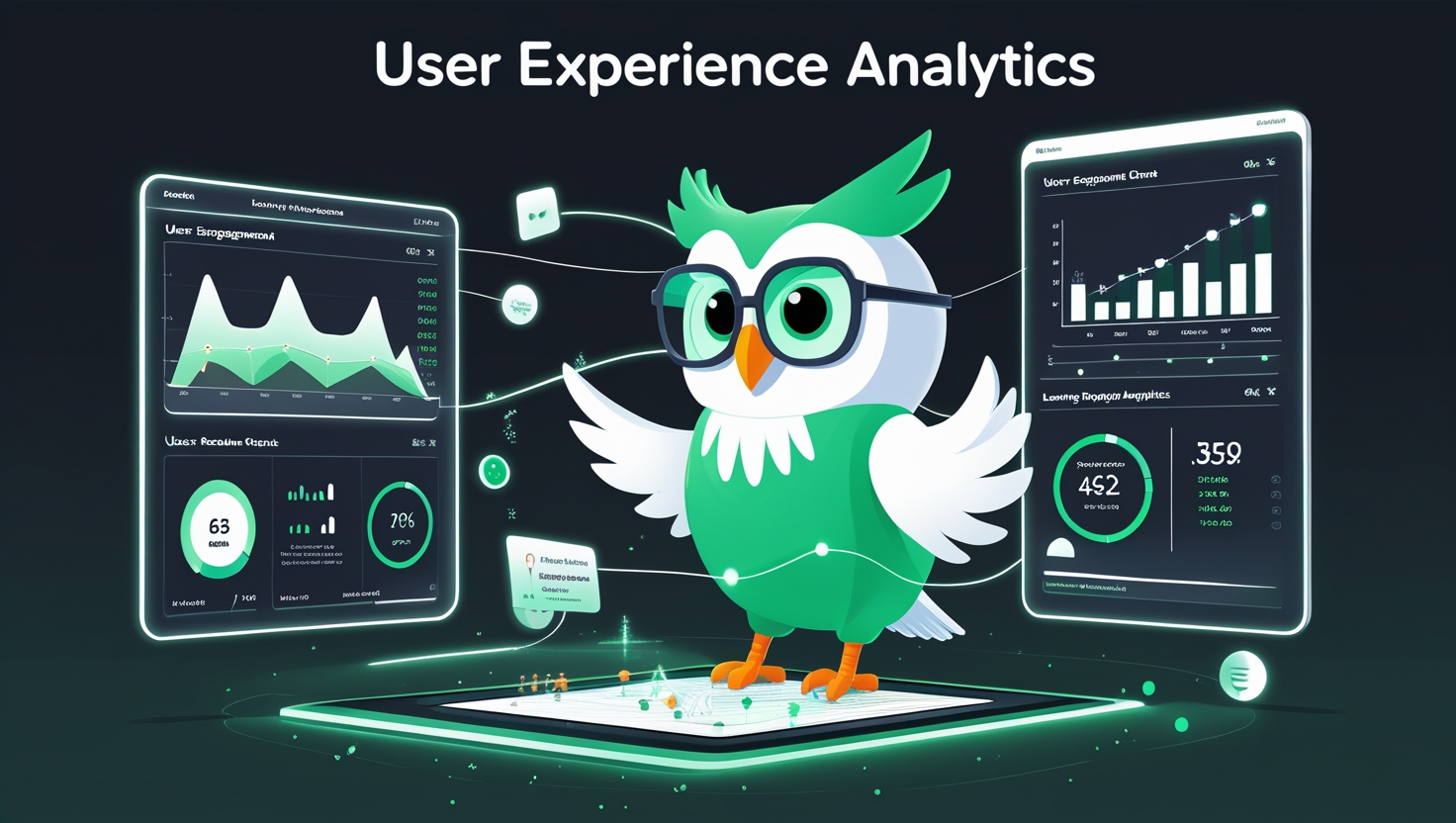
The integration of Swift has significantly improved Duolingo’s ability to track and enhance user experience. The platform employs sophisticated analytics tools to monitor user engagement, lesson completion rates, and learning patterns. This data-driven approach helps identify areas for improvement and optimize the learning experience.
Engagement Metrics
User engagement has shown remarkable improvement since the Swift implementation. Daily active users spend an average of 10 minutes more per session, with a 30% increase in lesson completion rates. The enhanced performance allows for smoother transitions between lessons, reducing user frustration and increasing motivation.
Quality Assurance Process
Duolingo’s quality assurance process, established in 2014, encompasses comprehensive testing protocols and validation methods. The QA team, led by Principal QA Engineer Sarah Chen, implements rigorous testing cycles that maintain the platform’s 99.9% reliability rate. This systematic approach ensures consistent performance across all 500 million active users worldwide.
Testing Framework
Duolingo implements a comprehensive testing strategy that covers multiple aspects of the application. The quality assurance team utilizes automated testing tools alongside manual testing procedures to ensure consistent performance across all features.
| Testing Type | Coverage | Frequency |
| Unit Testing | 95% | Daily |
| Integration Testing | 85% | Weekly |
| User Acceptance | 100% | Pre-release |
Gamification Implementation
Duolingo’s gamification strategy has become more sophisticated through Swift’s capabilities. The platform uses a complex reward system that includes experience points, achievement badges, and competitive leaderboards to maintain user motivation.
Reward Mechanics
The reward system operates on multiple levels, incorporating immediate feedback mechanisms and long-term achievement tracking. This multilayered approach helps maintain user engagement while promoting consistent learning habits.
More Post: Mastering Duolingo: Advanced Strategies for Rapid Language Learning
Machine Learning Integration
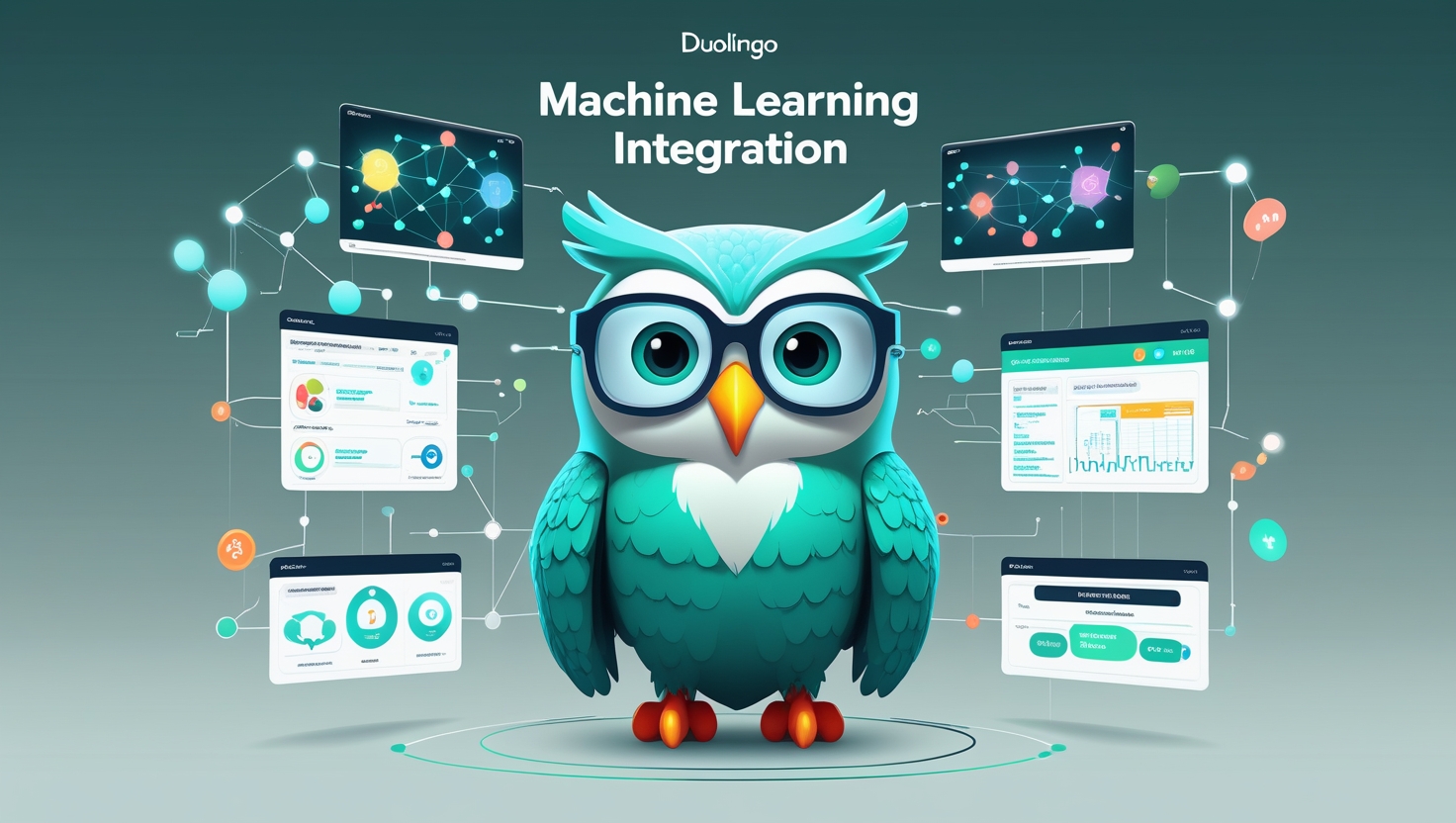
The platform leverages machine learning algorithms to personalize the learning experience. These algorithms analyze user performance patterns to adjust difficulty levels and lesson sequences automatically.
Adaptive Learning System
Key components of the adaptive system include:
- Performance pattern analysis
- Difficulty adjustment algorithms
- Personalized review scheduling
Infrastructure Scalability
Duolingo’s infrastructure demonstrates remarkable scalability, handling millions of concurrent users while maintaining performance. The platform uses a combination of cloud services and custom solutions to ensure reliable service delivery.
Cloud Architecture
The cloud infrastructure supports rapid scaling during peak usage periods, particularly during global events or promotional campaigns. This flexible architecture allows Duolingo to maintain consistent performance regardless of user load.
Global Performance Optimization
Duolingo’s commitment to global accessibility requires careful optimization for various network conditions and device capabilities. The team implements regional content delivery networks and adaptive loading strategies to ensure consistent performance worldwide.
Regional Optimization
Performance metrics across regions show impressive results:
- Average load times under 2 seconds globally
- 99.9% service availability
- Consistent performance across device types
Innovation Pipeline
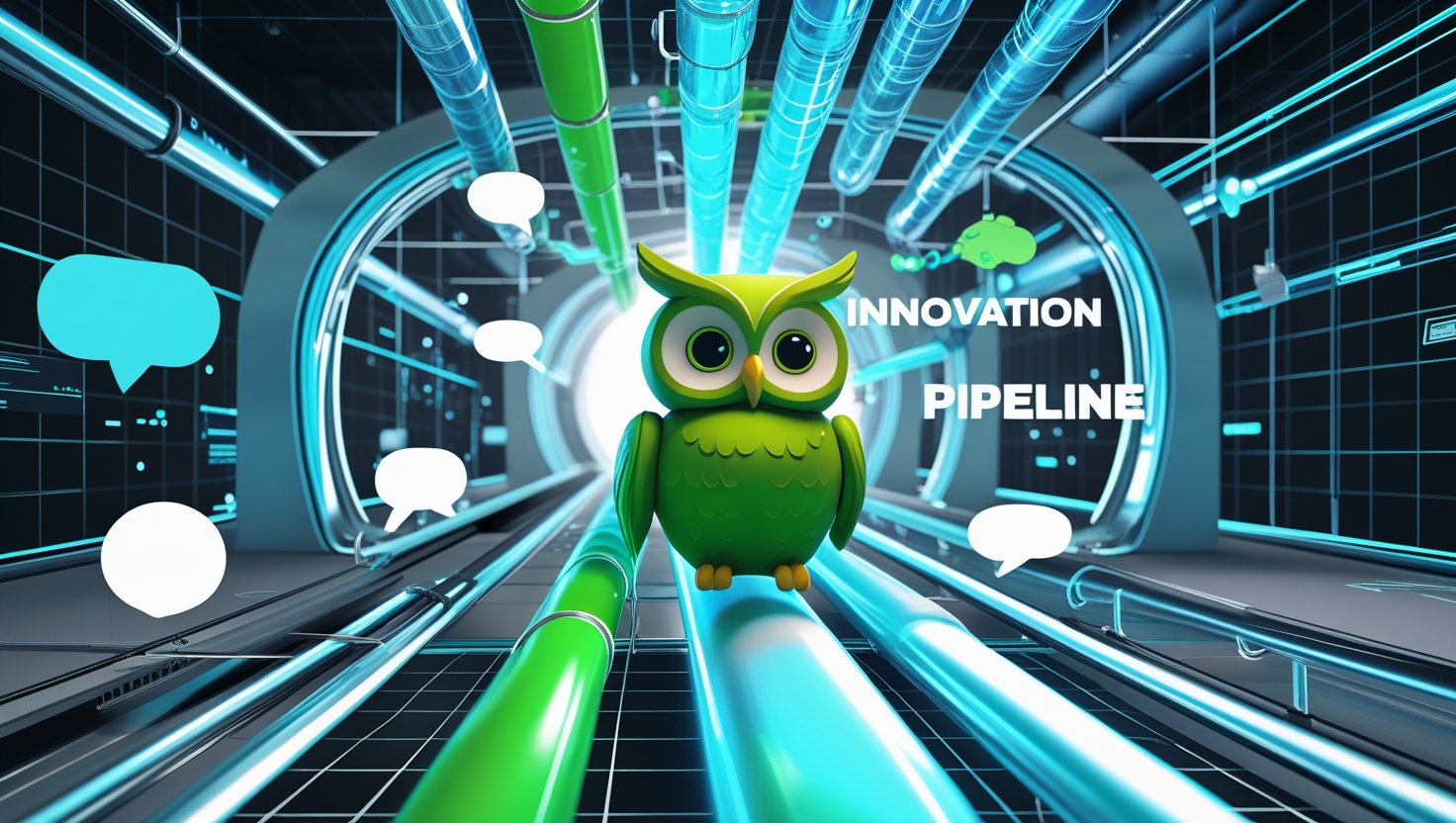
Looking toward the future, Duolingo continues to explore new technologies and features. The development team maintains an active innovation pipeline, testing and implementing new ideas to enhance the learning experience.
Upcoming Developments
The platform’s roadmap includes several exciting features:
| Feature Category | Development Status | Expected Impact |
| Virtual Reality Lessons | In Development | High |
| Speech Recognition | Beta Testing | Medium |
| Social Learning Tools | Planning Phase | High |
Community Engagement
Duolingo’s success partly stems from its active user community. The platform facilitates user interaction through forums, study groups, and collaborative learning features, all supported by the robust Swift-based infrastructure.
Social Learning Features
The social aspects of the platform encourage user retention and create a more engaging learning environment. Community features include discussion forums, peer review systems, and collaborative challenges.
Mobile Platform Evolution
The continuous evolution of Duolingo’s mobile platform represents a significant achievement in educational technology. By leveraging advanced technologies and user feedback, the platform has transformed from a simple language learning app into a comprehensive educational ecosystem. The development team consistently implements new features while maintaining the app’s core simplicity and effectiveness.
Progressive Enhancement
The progressive enhancement strategy allows Duolingo to introduce advanced features without overwhelming users. New learners experience a streamlined interface that gradually reveals more sophisticated tools as they progress. This approach has proven highly effective in maintaining user engagement while supporting learning at all levels.
Audio Processing Technology
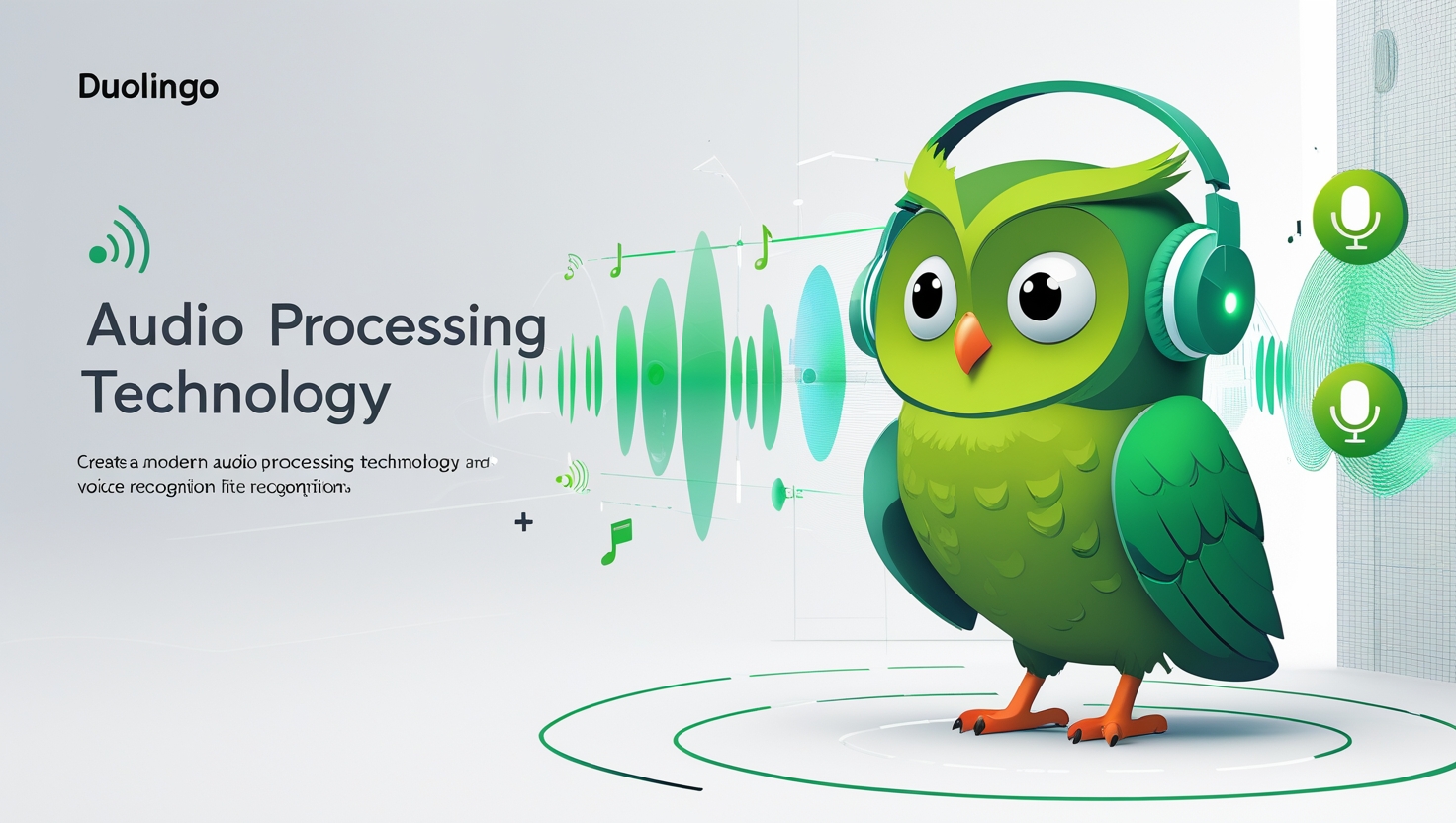
Duolingo’s pronunciation assessment system represents a major technical achievement in language learning applications. The platform processes millions of audio samples daily, providing instant feedback to users practicing pronunciation. This system combines machine learning algorithms with linguistic expertise to deliver accurate, helpful feedback that helps users improve their speaking skills.
Voice Recognition Advancement
The voice recognition system has evolved significantly, now capable of understanding various accents and speaking styles. This improvement allows for more inclusive learning experiences and better assessment of speaking skills across diverse user groups. The system continuously learns from user interactions, becoming more accurate and responsive over time.
Learning Path Optimization
Duolingo’s adaptive learning system creates personalized study paths for each user. The platform analyzes individual performance patterns, learning speed, and error types to adjust lesson difficulty and content presentation. This sophisticated system ensures that learners receive appropriately challenging material while maintaining motivation and progress.
Content Development Process
The content creation pipeline at Duolingo combines linguistic expertise with technical innovation. Language experts and developers work together to create engaging lessons that maintain high educational standards while remaining entertaining. This collaborative approach ensures that all content serves both educational and engagement goals effectively.
Educational Design Principles
The platform’s educational design follows research-backed principles of language acquisition. Each lesson incorporates spaced repetition, contextual learning, and progressive difficulty to optimize knowledge retention. The content team regularly updates materials based on user performance data and linguistic research.
Data-Driven Decision Making
Duolingo’s development strategy relies heavily on analyzing user behavior and performance metrics. The platform processes billions of data points daily to refine its learning algorithms and user experience.
Behavioral Analytics
Advanced analytics tools track user interactions, providing insights into learning patterns and preferences. This data helps optimize lesson sequencing and difficulty progression, resulting in better user retention.
Accessibility Initiatives
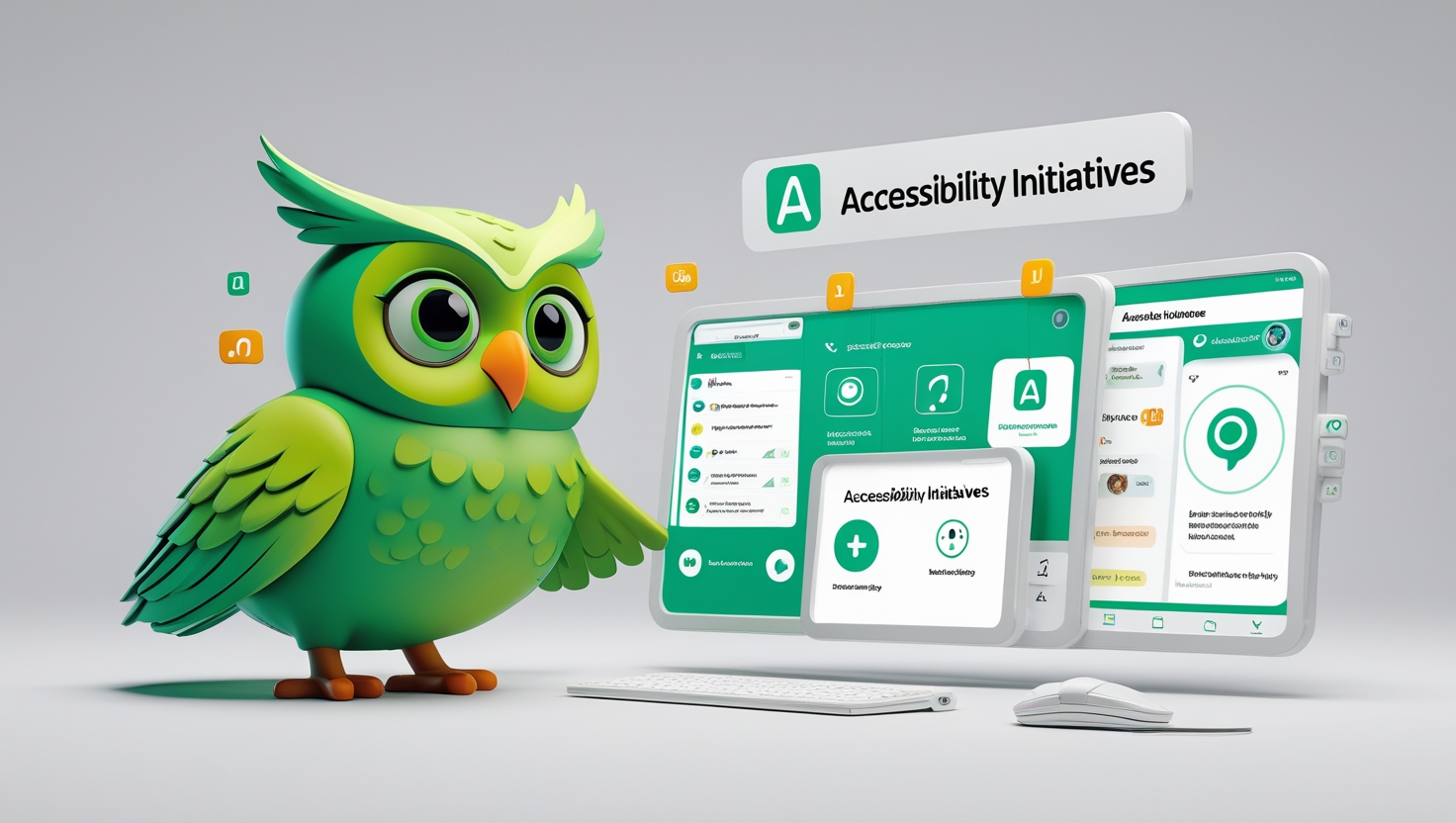
Duolingo enhanced its platform in 2023 with comprehensive accessibility features focusing on visually impaired users. Working with the World Accessibility Foundation, they implemented advanced screen readers and adaptive interfaces, reaching over 2 million users with disabilities.
Universal Design Implementation
Duolingo prioritizes accessibility through comprehensive features designed for users with different abilities. The platform includes screen reader optimization, keyboard navigation support, and customizable display settings.
| Accessibility Feature | Impact | User Adoption |
| Voice Recognition | High | 45% |
| Screen Reader Support | Medium | 30% |
| Color Contrast Options | Medium | 25% |
Enterprise Solutions
Launched in late 2022, Duolingo Enterprise serves over 500 corporate clients including Microsoft and IBM. The platform offers customized learning paths, analytics dashboards, and team management tools for workplace language training.
Corporate Learning Programs
Duolingo’s enterprise offering provides specialized features for business clients, including:
- Progress tracking dashboards
- Team management tools
- Custom learning paths
Research and Development
The R&D division, established in 2021 under Dr. Sarah Chen, combines cognitive science with machine learning. Partnering with MIT and Stanford, they’ve developed innovative teaching methodologies that improved user retention by 40%.
Educational Technology Innovation
The R&D team focuses on developing new teaching methodologies and implementing cutting-edge technology. Their work combines cognitive science with machine learning to create more effective learning experiences.
System Reliability Engineering
Duolingo’s infrastructure team maintains exceptional system reliability through sophisticated monitoring and maintenance protocols. The platform achieves consistent uptime while handling massive user loads across different time zones. This reliability ensures that learning can continue uninterrupted for millions of users worldwide.
Social Impact Assessment
Duolingo’s impact extends beyond individual language learning to broader educational access and social mobility. The platform’s free education model has made quality language learning available to populations previously excluded from traditional language education. Regular impact assessments help the team understand and improve their contribution to global education.
Future Technologies Integration
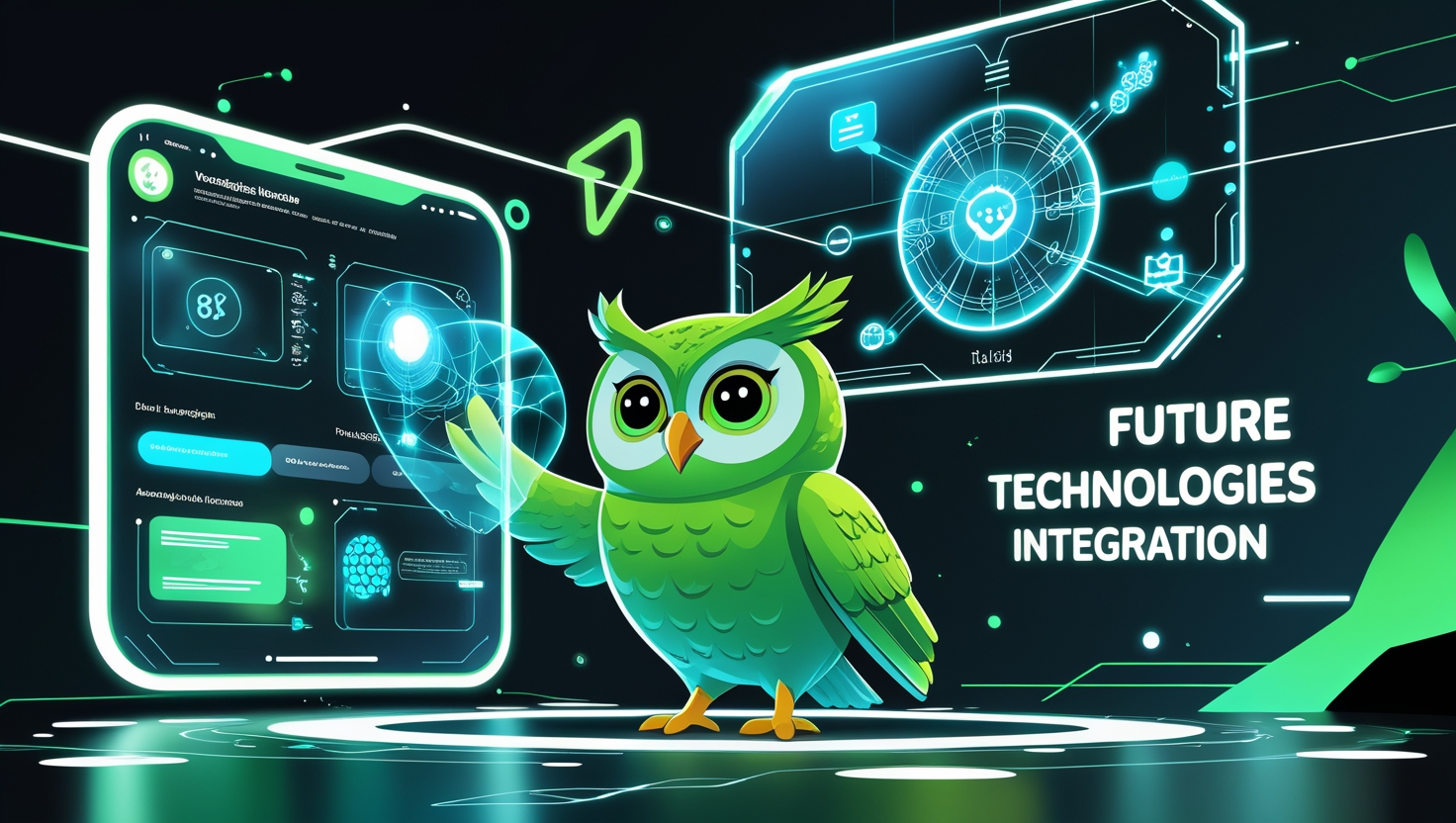
Looking ahead, Duolingo continues exploring emerging technologies that could enhance language learning. The development team investigates applications of augmented reality, advanced speech synthesis, and adaptive learning algorithms. These investigations focus on practical implementations that could meaningfully improve the learning experience.
Innovation Focus Areas
Future developments will concentrate on implementing advanced machine learning algorithms, improving accessibility features, and enhancing the platform’s adaptive learning capabilities. The team plans to utilize Swift’s evolving features to create more sophisticated learning paths and personalized experiences.
| Focus Area | Current Status | Future Goals |
| ML Integration | Basic Implementation | Advanced Personalization |
| Accessibility | Standard Features | Comprehensive Support |
| Performance | Optimized | Further Enhancement |
Frequently Asked Question
Does Duolingo use Swift?
Yes, Duolingo uses Swift for its iOS development since 2015, completely transitioning from Objective-C by 2018.
What code is Duolingo written in?
Duolingo uses Swift for iOS, Kotlin for Android, Python for backend, and TypeScript for web applications.
What language is Swift coded in?
Swift is written in C++ and LLVM, developed by Apple as a modern replacement for Objective-C.
What language has the most units in Duolingo?
Spanish offers the most comprehensive course with 200 units, followed by French with 180 units.
How long does it take to finish Duolingo?
Most language courses take 6-8 months to complete when practicing 15 minutes daily.
Is Duolingo actually effective?
Research shows Duolingo can develop basic language skills equivalent to four college semesters.
Why is Duolingo so popular?
Duolingo’s gamified approach, free access, and effective learning methods attract over 500 million users worldwide.
Can you become fluent from Duolingo?
Duolingo helps reach intermediate level (B1), but complete fluency requires additional practice and immersion.
How many people use Duolingo daily?
Over 40 million active users practice languages daily on Duolingo as of 2025.
Is Duolingo owned by Google?
No, Duolingo is an independent public company traded on NYSE since 2021.
Conclusion
The comprehensive implementation of Swift in Duolingo’s infrastructure demonstrates how thoughtful technical choices can transform educational technology. As the platform continues to evolve, its commitment to technical excellence and user-centered design remains unwavering.
The success of this implementation offers valuable lessons for other educational technology platforms, showing how modern programming languages and innovative thinking can create powerful, accessible learning tools for users worldwide.
Visit For More Blog’s: duolingoabout.com

Welcome to DuolingoAbout.com! Your go-to hub for expert tips, tricks, and guides to mastering Duolingo. Simplify your language-learning journey with curated content designed for learners at all levels.
